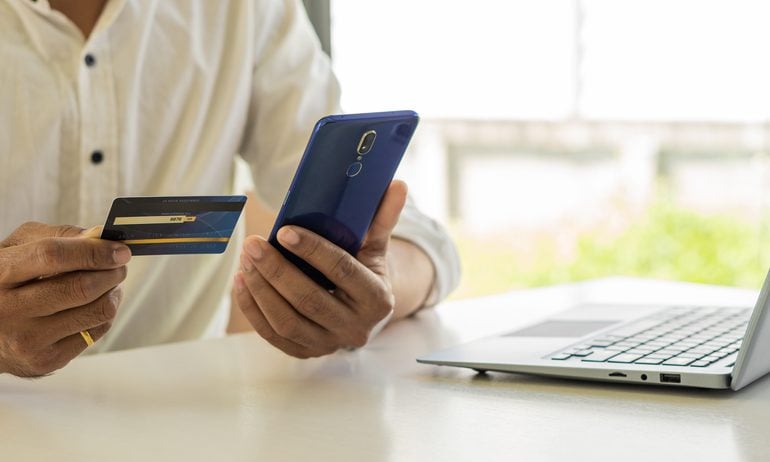How To Spot GoFundMe Scams In 2025
Fraudulent GoFundMe fundraisers may have misleading information or share vague details about the cause.

Many, or all, of the products featured on this page are from our advertising partners who compensate us when you take certain actions on our website or click to take an action on their website. However, this does not influence our evaluations. Our opinions are our own. Here is a list of our partners and here's how we make money.
Crowdfunding can be a powerful way to bring people together and raise money for a noteworthy cause. GoFundMe is one of many platforms created with that goal in mind.
The platform has grown rapidly since its inception in 2010, and with growth can sometimes come an increased risk of scams. Here's how the site works — and how to spot cons.
How does GoFundMe work?
GoFundMe is an online crowdfunding platform that leverages social networks to help people raise money for personal or charitable causes. You can start a GoFundMe for yourself, someone else or a charity. Setting up a fundraiser is a multi-step process that involves answering questions about what the fundraiser is for, explaining what it’s about, sharing it with your social network and adding bank information to receive the money.
Although it’s a straightforward process to start a GoFundMe, there are eligibility requirements. In the United States, you must be 18 or over and have a Social Security number, valid U.S. photo ID, residential address, phone number and a U.S. bank account in your name.
GoFundMe has a trust and safety team that works to verify and review fundraisers. The team uses technical tools, machine learning and video and image review to identify misuse.
» MORE: Is GoFundMe taxable?
Signs of a GoFundMe scam
Even with eligibility requirements and a specialized team, it is still possible for scammers to create fake fundraisers. A fraudulent fundraiser could look like:
Misleading or factually incorrect information: Check for incorrect names, addresses, occupations or ages. These clues could point to a scammer impersonating a real person to raise money for a fake cause.
Vague fundraisers with few details about the beneficiary or family: The fundraiser should offer solid information about the family, person or organization requesting help. It should also detail the purpose of the fundraiser and how the funds will be used. Sometimes criminals raise money on behalf of a person facing challenges with no intention of giving them the money,
A lack of digital presence: Check to see whether you can find an image or video of the fundraiser or beneficiary. Try using Google Reverse Image Search to look for other pictures of the fundraiser beneficiary to help verify their identity.
Organizers with new social media accounts and few followers: This can be a red flag indicating a fake account, a fake cause and impersonation.
Minimal or no communication from fundraiser organizer: If you try to contact the organizer and don’t get an adequate response, it could be a sign that something is wrong.
Signs of impersonation: Check to see if you’ve read the fundraiser story somewhere else before; that could indicate it’s a financial scam.
Reporting GoFundMe scams
If your gut is telling you a fundraiser feels off, take extra precautions before donating.
Contact GoFundMe via its website or email to raise concerns. You can report as someone who has been impersonated or as someone who suspects a fundraiser may be fraudulent.
Donating to a fraudulent fundraiser: In case you donated to a fraudulent fundraiser, the organization has a GoFundMe giving guarantee, which ensures you get a full refund if it’s proven that a fundraiser is a scam. GoFundMe will refund any donation amount up to one year after you make the donation. As an added layer of protection, fundraisers that violate GoFundMe’s terms of service or misuse funds may be temporarily or permanently shut down.
To get a refund, you submit a claim, which will then be investigated by the trust and safety team. Once the investigation is complete, your refund is processed within three to 10 business days.
Beneficiary fraud: If you’re the beneficiary of a fundraiser and haven’t received the money raised, then that's another reason to file a claim. GoFundMe's beneficiary guarantee states that you can request a payment as long as the claim is made within a year of the fundraiser creation date and there is evidence of misuse.
Impersonation: If someone impersonated you in a GoFundMe scam, it is possible to report it. One way is to click the "report a fundraiser" button and alert the company that a fundraiser was created without your consent.
General concerns: If you have general concerns, you can fill out a form to report a fundraiser. You’ll be asked for your basic information and the fundraiser URL.
GoFund Me fee structure
GoFundMe makes money through transaction fees and donations. The platform charges a 2.9% transaction fee and $0.30 per donation to help cover payment processing.
The transaction fees are automatically taken from each donation, so the person who hosts the fundraiser doesn’t have to worry about paying a bill. Likewise, the customer isn’t being charged an additional fee on top of their donation.
For example, if you donated $50 to a fundraiser, a transaction fee of $1.45 would be charged in addition to $0.30. So $1.75 goes to GoFundMe and $48.25 that goes to the fundraiser recipient.
The platform also makes money via tips, which are usually automatically added to your donation. These tips may go toward customer service, trust and safety protections or technology that supports fundraising on the platform.
The automatic tips on GoFundMe sometimes cause confusion for consumers because they get to the end of the payment process and see a dollar amount higher than what they initially agreed to donate.
You have the option of reducing the tip or entering a custom amount before you pay. If you want to ditch the tip altogether, you can do so by making the tip zero.
Alternatives to GoFundMe
There are other ways to support a cause you care about that may give you more peace of mind than GoFundMe. One way is to tap into local community efforts, such as those orchestrated by faith-based organizations or other groups. There is also the option of seeing whether you can connect with the person in need and donate to them directly.

